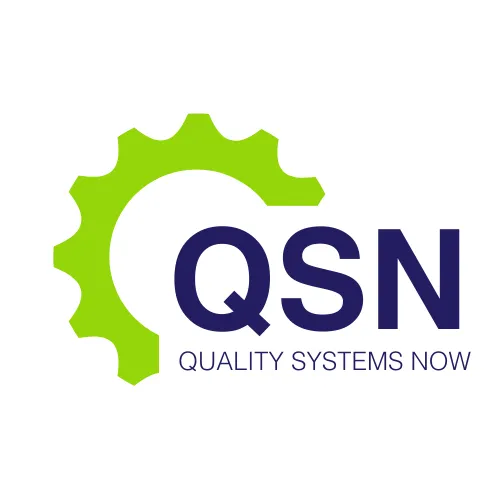NEWS

Upcoming Webinar: Breaking Silos – Integrating Processes and Systems
Organisations operating within the therapeutic goods sector—including manufacturers, testing laboratories, and biotechnology companies—are facing increasing regulatory complexity, data expectations, and operational demands. As the requirements for compliance grow more stringent, functional silos within organisations pose a critical barrier to quality performance. Misalignment between Quality Assurance (QA), Regulatory Affairs (RA), Operations, and Research and Development (R&D) leads to fragmented systems, duplicated effort, and compliance risk.
At Quality Systems Now, we recognise that the root cause of many regulatory failures lies in poor integration across functions and systems. We invite you to join us for a free, 60-minute live webinar titled “Breaking Silos – Integrating Processes and Systems”. This event will provide practical insights and scientifically grounded strategies for dismantling silos, aligning cross-functional teams, and embedding a quality culture that supports operational excellence and regulatory compliance.
The Cost of Silos in a Regulated Environment
Siloed operations in therapeutic goods manufacturing result in a cascade of inefficiencies and risks. When departments do not communicate effectively, critical processes such as change control, deviation management, validation, and risk assessment are inconsistently applied or delayed. For example, if R&D introduces a formulation change without input from QA or RA, the implications for GMP validation and regulatory filings may be overlooked. Similarly, when Operations initiates a process improvement without full understanding of qualification requirements, there is a risk of non-compliant production or data integrity failures.
Beyond inefficiency, silos increase the likelihood of inspection findings. Regulatory authorities such as the Therapeutic Goods Administration (TGA), US FDA, and EMA routinely identify “lack of cross-functional communication” as a systemic issue in their inspection reports. These findings often translate into warning letters, audit failures, and product recalls—each of which has a significant cost in both financial and reputational terms.
Purpose of the Webinar
Our webinar is designed to equip attendees with both the strategic and operational tools required to overcome siloed behaviour and improve integration across quality-critical processes. Led by experts in GMP compliance and quality systems design, this session will focus on how to:
Identify points of disconnection within your current systems
Build cross-functional accountability for quality
Design process flows that incorporate regulatory expectations from the outset
Leverage system integration tools to enhance traceability and communication
Establish a quality culture that spans all functions and levels of your organisation
Whether you are a QA leader, regulatory affairs specialist, operations manager, or R&D project lead, this webinar will offer a practical roadmap for aligning your teams and improving compliance outcomes.
Key Topics Covered
1. Systems Integration: A Scientific Approach
Effective system integration is not simply a matter of digital transformation. It requires a scientifically sound analysis of business processes, data flows, and decision pathways. We will explore how structured tools such as process mapping, interface risk assessments, and failure mode analysis can be used to evaluate integration gaps.
For example, an integrated Quality Management System (QMS) should connect change control with validation, deviations with CAPA, and risk management with audit planning. The webinar will demonstrate how poorly connected subsystems introduce control gaps that may not be immediately visible but lead to major issues during audits or inspections.
2. Cross-Functional Process Design
Integration requires intentional process design that reflects both operational realities and compliance obligations. We will present a case study in which the integration of R&D, QA, and RA during the product development phase reduced time to regulatory submission and improved first-cycle approval rates.
Attendees will learn how to design workflows that prompt cross-functional inputs at key decision points, ensuring that quality, regulatory, and operational considerations are balanced early in the process. Strategies such as stage-gate reviews, quality by design (QbD) frameworks, and concurrent validation will be discussed.
3. Organisational Culture and Leadership
Technology and processes alone cannot drive integration. Organisational culture—particularly the culture around quality—plays a critical role. When employees perceive quality as “QA’s responsibility” rather than a shared value, the organisation remains siloed regardless of system design.
Our webinar will address leadership behaviours, training strategies, and communication models that help create a unified quality culture. We will show how tone from the top, quality KPIs, and cross-training initiatives can encourage shared ownership of compliance and continuous improvement.
4. Digital Tools for Integration
Modern compliance increasingly depends on digital tools, from electronic batch records and laboratory information management systems (LIMS) to audit trail software and QMS platforms. However, the existence of digital systems alone does not guarantee integration. These tools must be configured and validated to support cohesive, end-to-end quality processes.
We will explore how organisations can use digital infrastructure to break down silos—automating notifications, linking quality events, and enhancing visibility. Examples will include real-time dashboards for deviation trending, integrated training management systems, and electronic workflows for document review and approval.
5. Case Studies and Lessons Learned
Drawing on our extensive experience across therapeutic goods manufacturing and biotech sectors, we will present real-world examples of both success and failure. These case studies illustrate the tangible benefits of integration—including reduction in batch release delays, improved regulatory inspection outcomes, and lower CAPA recurrence rates—as well as the pitfalls of fragmented systems.
Case studies will include:
A contract manufacturer who reduced audit observations by 80% after implementing integrated deviation and change control processes
A laboratory that experienced regulatory action due to lack of communication between QA and analysts regarding method validation
A biotech startup that improved time to market by embedding RA and QA review into early-stage product development
Who Should Attend
This webinar is relevant to a wide range of professionals in regulated industries, including:
Quality Assurance Managers and Officers
Regulatory Affairs Professionals
Manufacturing and Operations Managers
Research and Development Scientists
Compliance and Risk Officers
Senior Management and Executives
Anyone involved in GxP compliance or quality-critical decision-making will benefit from the actionable insights provided in this session.
Registration Details
Event Title: Breaking Silos – Integrating Processes and Systems
Duration: 60 minutes (including Q&A)
Cost: Free
Format: Live webinar
Date and Time: 30th May 2025
Registration Link: https://qualitysystemsnow.com.au/webinar-breaking-silos
Participants will also receive access to exclusive resources, including a downloadable integration readiness checklist and a GMP process interface audit template.
Conclusion
The path to sustainable compliance lies in connection, not isolation. In an increasingly complex regulatory environment, therapeutic goods manufacturers and testing laboratories must evolve from reactive compliance to proactive, integrated quality systems. This requires a deliberate shift in mindset, processes, and tools.
At Quality Systems Now, we support our clients in this transformation with scientifically grounded methodologies and deep regulatory expertise. Our upcoming webinar—“Breaking Silos – Integrating Processes and Systems”—offers a rare opportunity to gain practical, immediately applicable strategies from specialists who understand the challenges of real-world implementation.
We invite you to take this important step toward building a resilient, compliant, and high-performing organisation. Join us live, and begin your journey toward breaking the silos that stand in the way of true quality integration.
